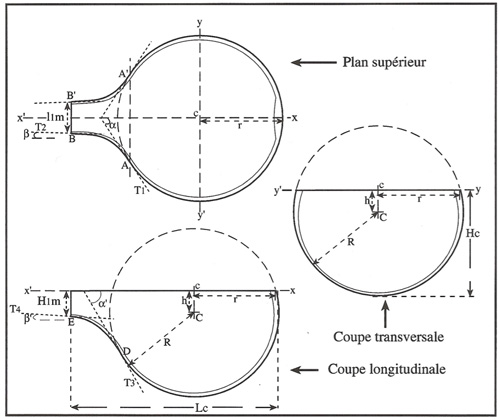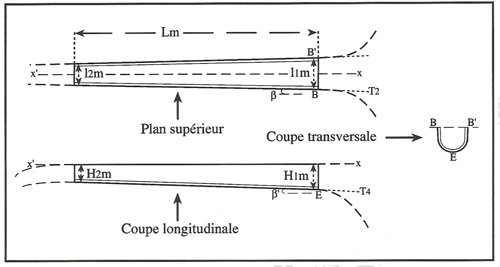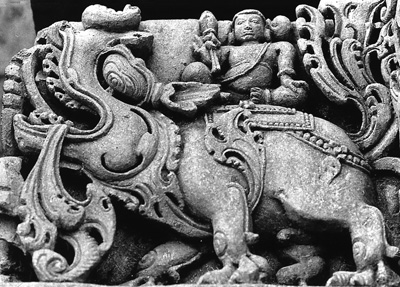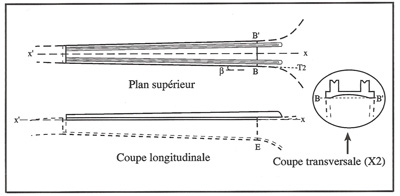To these four main structures we can add four alternative ones, when the yali, which is only an ornament and has no influence on the sound, is carved together with the pegbox. I’ll mention by a « + » those special variations and sum up the eight types described with their specifications in the above chart.
Almost all the structures which are admitted by the theory actually exist, some of them being used only in one manufacturing town, or by only one maker. The 2B+ structure is the only one I have never seen, but it may have been used in a few instances.
In India, some special adjectives are often used to describe those different types of veena, but their use is not always consistent. The word « ekkanda », the most prestigious, is given indiscriminately to veenas having structures 1, 1+, 2A or 2A+. The word « ekadandi » (neck in one piece) can qualify instruments of type 2A, 2A+ or 2B. « Ottu » is used only for the type 3 or 3+.
To close this matter, it is important to insist on the symbolic importance given in India to the concept of unity. The prefix « eka » (« one ») that we find in the words « ekkanda » or « ekadandi » lets us foresee an instrument in which this unity is at work and so a veena of superior quality. Yet, many testimonies of Indians as well as western makers, and my own experience make me think there is no direct link between the structure and the musical value of the instrument. As far as the interlockings are correctly done, the quality of the wood and of the work of the maker are certainly of much more importance. Two contradictory consequences can still be noticed from this taste for one piece instruments. The first one, negative, will be the will to make, even forcibly, a veena of type one or 2A in a piece of wood which is not proper for it. The poor quality of the wood will compel the maker to add strengthening pieces and camouflages which will spoil the homogeneity and the strength of the instrument. With the time, some twists and some cracks may appear on such veenas.
The second consequence, a more positive one, lies in the special attention given by a maker in the manufacturing of a one piece instrument. Its market value being higher, the work is preferably given to a master veena maker, and special care is given to each step of the making. This is certainly the real reason for the actual quality of many ekkanda veenas. |









